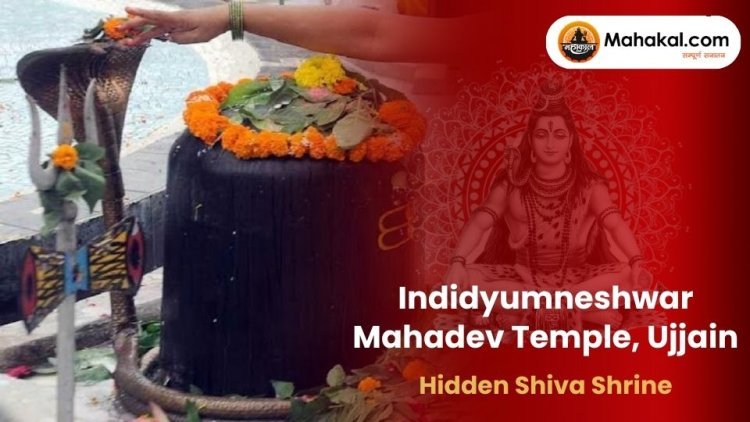Indidyumneshwar Mahadev Temple, Ujjain – Hidden Shiva Shrine
Discover the history and spiritual significance of Indidyumneshwar Mahadev Temple in Ujjain, a hidden Shiva shrine near the banks of the Shipra River.

Among the ancient and sacred temples scattered across Ujjain, the city of Lord Shiva, lies a spiritually powerful yet lesser-known shrine — Indidyumneshwar Mahadev Temple. Nestled away from the rush of main temple routes, this divine abode carries deep mythological roots and an aura of peace that attracts true seekers of Lord Shiva.
Mythological Background & History
The temple is named after King Indradyumna, a legendary ruler known for his unwavering devotion to Lord Shiva. According to ancient scriptures, the king performed intense penance here, seeking Shiva’s blessings. Pleased with his devotion, Lord Shiva manifested in the form of a Shiva Linga, which became known as Indidyumneshwar Mahadev. This divine event transformed the location into a sacred tirtha (pilgrimage site).
Over the centuries, saints and devotees have considered this temple a spiritually charged spot, often describing it as a place where prayers get answered and karmic cycles find peace.
Religious Significance
While Mahakaleshwar is undoubtedly the most famous temple in Ujjain, Indidyumneshwar Mahadev holds a quiet yet powerful place in the hearts of devotees. Pilgrims believe that a single darshan (sacred viewing) at this temple can grant peace of mind, cleanse sins, and strengthen one’s connection to Lord Shiva.
During holy occasions like Shravan Maas, Mahashivratri, and Somvati Amavasya, thousands of devotees visit the temple to perform special pujas and abhisheks.
Temple Architecture
The architecture of the Indidyumneshwar Mahadev Temple is simple yet spiritually striking. Made of ancient stone, the structure showcases traditional Hindu temple design with a small sanctum sanctorum where the Shiva Linga resides. Carvings on the pillars depict symbols of Shaivism, while the serene surroundings provide an ideal environment for meditation and prayer.
A sacred pond nearby is believed to be the same where King Indradyumna took his ritualistic baths.
Rituals and Worship
Worship at the temple follows classical Shaivite traditions:
-
Abhishek (ritual bathing) with water, milk, honey, curd, and ghee
-
Offering of Bilva leaves, Datura, and white flowers
-
Chanting of “Om Namah Shivaya” during prayers
-
Aarti and bhajan sessions held especially during Shivratri and Mondays
Devotees often sit for some time after darshan, absorbing the peaceful energy of the temple.
How to Reach
By Road: The temple is accessible by auto-rickshaw, cab, or local buses from any part of Ujjain city.
By Train: Ujjain Junction is the nearest major railway station, located just a few kilometers away.
By Air: The nearest airport is Devi Ahilya Bai Holkar Airport in Indore, around 55 km from Ujjain. From there, taxis are easily available.
Google Maps will easily guide you to "Indidyumneshwar Mahadev Temple, Ujjain".
Nearby Temples and Attractions
While visiting Indidyumneshwar Mahadev Temple, pilgrims can also explore:
-
Mahakaleshwar Jyotirlinga – One of the 12 Jyotirlingas of Shiva
-
Harsiddhi Mata Temple – A Shaktipeeth with powerful feminine energy
-
Ram Ghat – Holy bath on the Shipra River
-
Kal Bhairav Temple – Known for its unique offering of alcohol
-
Sandipani Ashram – Where Lord Krishna studied
Indidyumneshwar Mahadev Temple may not be on every tourist’s list, but it is a spiritual treasure for every true devotee. Its peaceful surroundings, sacred history, and deep energy offer a space for prayer, surrender, and self-reflection. If you are visiting Ujjain, don’t miss this spiritually potent shrine tucked away in devotion’s silence.
Looking for temple timings, rituals, and travel arrangements for Indidyumneshwar Mahadev? Visit Mahakal.com for detailed darshan support.
What's Your Reaction?















